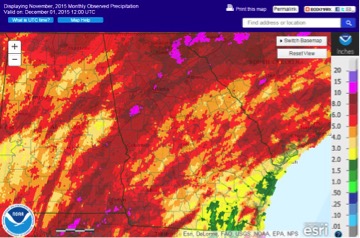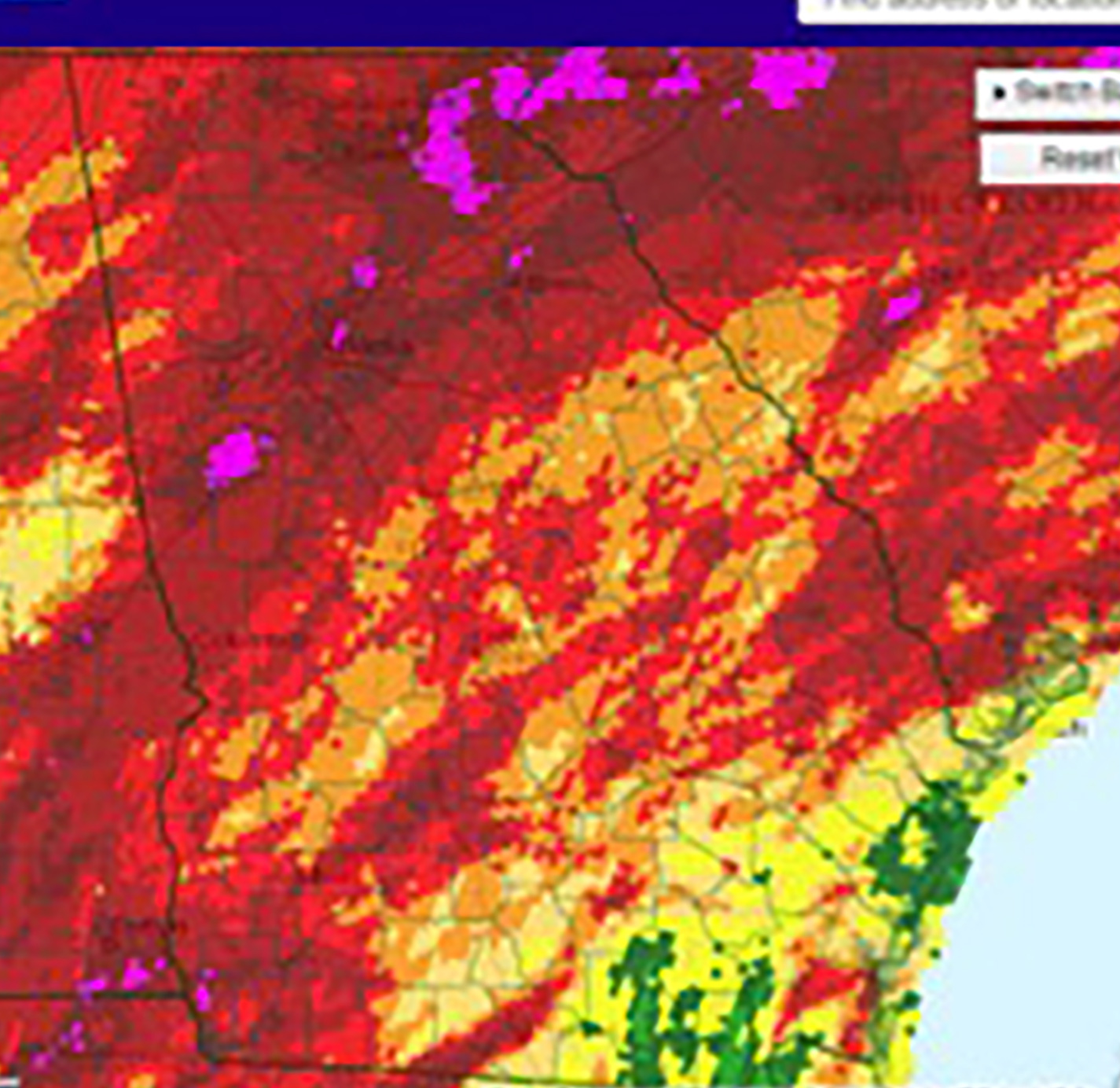November 2015 was one of the 10 wettest, warmest Novembers on record for Georgia. Some areas of the state received as much as 10 inches more rain than is normal, and temperatures were generally 3 to 7 degrees above normal.
The wet weather hampered farmers’ efforts to wrap up their harvest and prepare their fields for winter. Rain also impacted peanut and cotton yields and quality.
Wet conditions plagued farmers across the region during November. Inclement weather led to school closings in Telfair and Wheeler counties, in Georgia, on Nov. 9. Due to the wet conditions, all drought was gone from the state by the end of the month.
A series of storm systems with lots of precipitation broke a number of daily rainfall records early in the month. On Nov. 1, the rainfall record was broken in Columbus, Georgia. On Nov. 2, rainfall amounts broke records in Atlanta, Athens, Columbus and Macon, Georgia, and on Nov. 3 and Nov. 8, rainfall records were broken in Alma, Georgia.
For the month of November, the highest total precipitation recorded by a National Weather Service station was 9.44 inches in Columbus, 5.34 inches above normal. The lowest total precipitation was 2.55 inches, 0.07 inches above normal, recorded in Alma.
Atlanta received 7.98 inches of precipitation for November, 3.88 inches above normal; Athens received 9.30 inches, 5.48 inches above normal; Macon received 6.89 inches, 3.57 inches above normal; Savannah, Georgia, received 3.42 inches, 1.05 inches above normal; Augusta, Georgia, received 5.41 inches, 2.59 inches above normal; Rome, Georgia, received 5.77 inches, 0.92 inches above normal; Brunswick, Georgia, received 4.57 inches, 2.54 above normal; and Valdosta, Georgia, received 3.33 inches, 0.77 inches above normal.
According to the National Weather Service, it was the second wettest November on record in Athens, the fourth wettest in Columbus, the fifth wettest in Atlanta, the sixth wettest in Macon and the ninth wettest in Augusta.
The highest single-day rainfall amount recorded by Community Collaborative Rain, Hail and Snow Network (CoCoRaHS) volunteers was 5.11 inches west of Sylvania, Georgia, in Screven County on Nov. 3. A volunteer east of Bainbridge, Georgia, in Decatur County received 4.72 inches on Nov. 19.
For November, the highest total rainfall amount recorded by a CoCoRaHS observer was 14.72 inches near Dillard, Georgia, in Rabun County. An observer east of Gainesville, Georgia, in Hall County recorded 13.32 inches of rain in November.
Temperatures across the state were well above normal for November. The warmest temperatures were generally in areas where the precipitation was lowest.
In Atlanta, the monthly average temperature was 57.7 degrees Fahrenheit, 3.7 degrees above normal; in Athens, the average was 56.7 F, 2.9 degrees above normal; in Columbus, the average was 61.1 F, 3.8 degrees above normal; in Macon, the average was 59.5 F, 3.5 degrees above normal; in Savannah, the average was 64.2 F, 4.9 degrees above normal; in Brunswick, the average was 66.9 F, 5.1 degrees above normal; in Alma, the average was 64.9 F, 5 degrees above normal; in Augusta, the average was 58.6 F, 3.4 degrees above normal; in Albany, Georgia, the average was 64.5 F, 5.8 degrees above normal; in Rome, the average was 56 F, 3.5 degrees above normal; and in Valdosta, the average was 67 F, 7.1 degrees above normal.
It was the seventh warmest November on record in Savannah, the ninth warmest in Columbus and Atlanta, and the 10th warmest in Athens.
Two separate severe weather outbreaks produced tornadoes in Georgia in November. On Nov. 1 and Nov. 2, a total of five tornadoes occurred in southwest Georgia, including one in Telfair County that damaged a number of trees and two large irrigation systems. On Nov. 18, three tornadoes occurred near Atlanta, including one EF1 tornado that caused an injury in Fulton County.
The outlook for December shows a continuing, increased chance of warmer-and-wetter-than-normal conditions across the state, particularly in the northeast mountains.
For more information, please visit the Climate and Agriculture in the South East blog at blog.extension.uga.edu/climate or visit gaclimate.com. Please email weather and climate impacts on agriculture to share on the blog to pknox@uga.edu.








